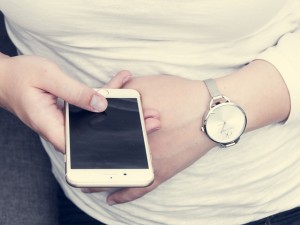 Do you know, even roughly, how many people support your organisation? There are different ways to estimate the number, which can be extremely important when planning your future budget, events and activities. Keeping a database with an up-to-date contact information for your supporters is a crucial tool in your toolbox, especially if this database contains an easy and, most importantly, working way to connect with them, call them to action and invite them to attend events.
Do you know, even roughly, how many people support your organisation? There are different ways to estimate the number, which can be extremely important when planning your future budget, events and activities. Keeping a database with an up-to-date contact information for your supporters is a crucial tool in your toolbox, especially if this database contains an easy and, most importantly, working way to connect with them, call them to action and invite them to attend events.
Once having such a database, it is extremely important to maintain it properly – you will need to regularly add the contact details of your new and/or prospective supporters, and you should try and clean out the ones that no longer want to receive any communication from you or have a change in circumstances. Of course, updating the contact details of people who have changed theirs is also a priority and there are many ways to do that.
As you can imagine, the best type of contact details you can have for your supporters is their mobile phone numbers. Sending out letters takes too long and is rather expensive, landlines are not reliable as less people use them nowadays and you can usually use them to reach people in the evening or over the weekend, which are probably not the best of times. In our time, your best options are e-mails and mobile phone numbers, and while the former is being overused and therefore growing less effective as a promotional / call-to-action tool, mobile texting can save the situation, offering access to your supporters at all times. (Just don’t overdo it!)
When it comes to collecting supporters’ contact details, a classic way of doing it is still in use – the sign-up sheet. You have probably used it yourself, but if you haven’t, it is basically a sheet of paper someone at your organisation, usually a volunteer, will present to the attendees of an event, asking them to fill in their names and, possibly, contact details.
While this was a very good way to do things in the past, when there were not so many technological solutions to the situation, the sign-up sheet is now considered, if not already dead, then terminally ill. So, if you haven’t started using it yet, don’t get into the habit of doing it – instead, check out this post by Peter Wrinch, who discusses the drawbacks of the sheet and offers creative solutions to get your supporters’ mobile numbers.
What Peter suggests doing is using your big events with a large number of attendees to fill the gaps in your mobile database. The first step is trying to get the mobile numbers when selling tickets for the event. Using ticket platforms like Eventbrite is a possible solution, as it asks for a mobile number during registration. Or, if you are selling the events on your organisation’s website, you can incorporate a mobile number field on checkout – and that way you will get at least some of the numbers of those who will attend.
This method, however, will not account for people who show up and buy tickets at the door, for those who have traded or resold tickets, or for guests brought by someone who has registered and bought a number of tickets. In order to add these people to your database and be able to send them a text later, Peter suggests interacting with your audience:
“What if, right when you finished your speech and after the crowd gave you a standing ovation, you asked everyone in the room to pull out their cell phones and hold them up in the air. You then asked them to text CONNECT to your dedicated local phone number. Once they sent their text, they would be asked to text their name and email address.”
This is certainly a great way to engage people, which will result in having the contact details of prospective donors, volunteers and general supporters. You may not get the mobile numbers of 100% of the attendees, but you will certainly have much more than what the sign-up sheet offers. 2016 is just starting and all your events are ahead of you – so why don’t you give it a try?

 Posted on 14,Jan |
Posted on 14,Jan |
 Posted by Anne
Posted by Anne 




There are no comments yet